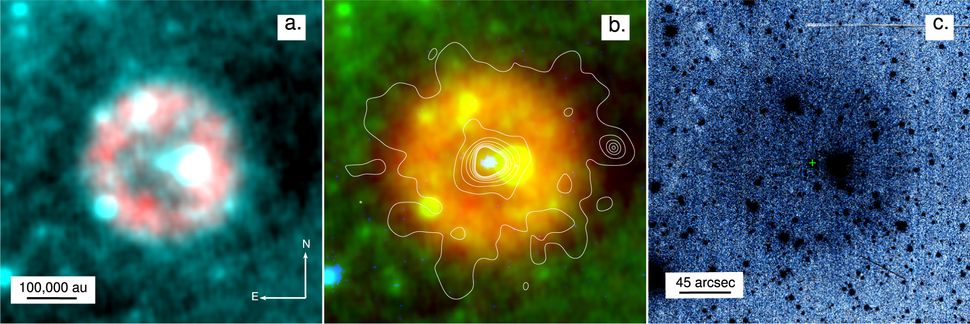Science
Related: About this forumNearly 900 years ago, astronomers spotted a strange, bright light in the sky. We finally know what c
Nearly 900 years ago, astronomers spotted a strange, bright light in the sky. We finally know what caused it.
By Yasemin Saplakoglu about 8 hours ago
The origins of the ancient supernova of A.D. 1181 remained a mystery for 840 years.

The remnants of the oldest documented supernova, which Chinese astronomers documented in A.D. 185 (not the supernova of A.D. 1181) (Image credit: X-ray: NASA/CXC/SAO & ESA; Infared: NASA/JPL-Caltech/B. Williams (NCSU))
In the 12th century, Chinese and Japanese astronomers spotted a new light in the sky shining as brightly as Saturn. They identified it as a powerful stellar explosion known as a supernova and marked its approximate location in the sky — but its cause remained a mystery.
Now, astronomers say they have solved the 840-year-old puzzle: Two extremely dense stars collided in the Milky Way and caused a supernova. The explosion likely resulted in the formation of a sizzling-hot star, now known as Parker's star, and a nebula, an expanding shell of gas and dust, called Pa 30.
This supernova, or the so-called Chinese Guest Star, of A.D. 1181 — which remained visible from Aug. 6 to Feb. 6 of that year — is only one of nine historically recorded supernovas in our galaxy, according to the study, published Sept. 15 in The Astrophysical Journal Letters. Astronomers have identified the remnants of only a handful of these supernovas, but the Chinese Guest Star was the only supernova of the last millennium whose remnants were yet to be found.
Some previous studies had suggested that another nebula, known as 3C 58, which is located near the marked location of the supernova, might be its remnants. But many factors, such as the age of the nebula, cast doubt on this theory. "Until now, there was no other viable candidate known for the remnant," the authors wrote in the study.

Pa 30 nebula and the central star. (Image credit: Courtesy of The University of Manchester)
More:
https://www.livescience.com/cosmic-mystery-ancient-china-supernova
lordsummerisle
(4,651 posts)PoindexterOglethorpe
(25,848 posts)How fascinating.
I'm pretty sure that two stars colliding almost never happens, so that's extraordinary.
Case in point: As you probably know, our galaxy, Milky Way, with about 300 billion stars, is on a collision course with Andromeda, about 1 trillion stars. Brace yourself. It's about 5 billion years away. Anyway, a while back I asked My Son The Astronomer when that happens, how many stars will actually crash into each other. His answer was, "Well, we don't know for sure, but the best guess is about ten stars." A lot more will interact gravitationally. But no more than ten crashing into each other when the two galaxies collide tells you a lot about how vast interstellar distances are.
localroger
(3,626 posts)Since the LIGO observation of the neutron star collision we can now be pretty sure that all of the elements heavier than iron in our world -- the gold in our jewelry, silver, platinum, and the uranium in our nuclear weapons -- were created in collisions between neutron stars. They don't happen very often but they create a LOT of these heavy elements, much more than supernovas ever could, and spray them far and wide throughout the galaxy. Those elements were part of the cloud that coalesced to create our solar system, and ultimately the Earth.